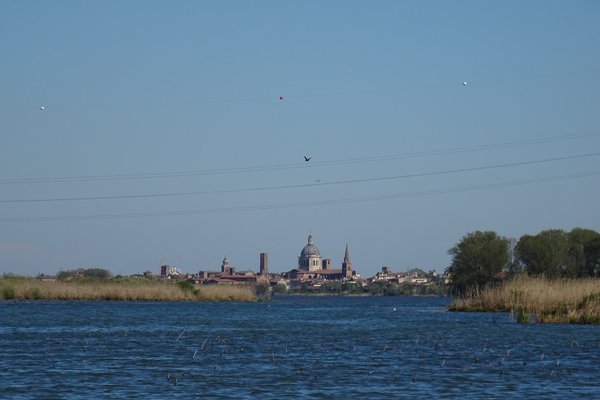Italy
Mantua and Sabbioneta
Mantua and Sabbioneta are towns in the Po Valley that represent aspects of Renaissance town planning.
Mantua shows the renewal and extension of an existing city, made possible by the participation of renowned Renaissance architects and painters. The newly founded Sabbioneta represents the implementation of the period’s theories about planning the ideal city. Both towns acquired their wealth during the reign of various members of the Gonzaga family, between 1328 and 1707.
Community Perspective: Mantua has an impressive ‘skyline’, which is best seen approaching by car on the SS10. Its highlights include the Palazzo Ducale, the Sant’Andrea Basilica and the Palazzo di Tè. Sabbioneta is less striking than Mantua and alone would probably not have been included in the List.
Site Info
Official Information
- Full Name
- Mantua and Sabbioneta (ID: 1287)
- Country
- Italy
- Status
-
Inscribed 2008
Site history
History of Mantua and Sabbioneta
- 2008: Inscribed
- Inscribed
- 2006: Revision
- Mantua and Sabbioneta were originally separate nominations
- Type
- Cultural
- Criteria
- ii
- iii
Links
- UNESCO
- whc.unesco.org
- Official
-
- mantovasabbioneta-unesco.it — Mantova e Sabbioneta world heritage website
All Links
UNESCO.org
- whc.unesco.org — whc.unesco.org/
Official Website
- mantovasabbioneta-unesco.it — Mantova e Sabbioneta world heritage website
Community Information
- Community Category
- Human activity: Urban planning
Travel Information
Emilia-Romagna and Marche Hotspot
Recent Connections
-
Perfect Inscriptions
2008 -
Sundial
At Piazza delle Erbe in Mantua -
Hercules
Two statues of Hercules in front of the…
Connections of Mantua and Sabbioneta
- Individual People
-
-
Leonardo da Vinci
Mantua: journeyed there -
Giacomo Casanova
Visited in 1778 -
Peter Paul Rubens
Mantua: lived at the court of Duke Vincenzo I of Gonzaga. -
Charles V
stayed at the Palazzo Te on two occasions, in 1530 and 1532
-
- Trivia
-
-
Opera
Giuseppe Verdi's opera Rigoletto is set in Mantua. -
Modelled after
Facade of the Basilica di Sant'Andrea is based on the Arch of Titus in Rome -
Twin Towns
Mantua & Sabbioneta -
Dubbed as another WHS
Sabbioneta is dubbed The Little Athens of the Po.
-
- History
-
-
Etruscans
Mantua is widely believed to have been founded by the Etruscans. According to Etruscan tradition, the city was "re-founded" by Ocno (also known as Bianore), a legendary figure. Furthermore, the city's name, Mantua, is thought to derive from Mantus, an Etruscan god of the underworld, similar to the Greek Hades. -
Sieges and Battles
Mantua: during The War of the Mantuan Succession in 1630 by an Imperial army of 36,000 Landsknecht mercenaries -
Located in a Former Capital
Duchy of Mantua (1273-1707)
-
- Architecture
-
-
Brick architecture
Most of its architecture (Sant'Andrea, Pallazo di Té) is made out of brick, sometimes covered with stucco, as there is no natural stone in this region -
Renaissance
"Mantua originated as an Etruscan settlement" (AB ev), -
Neoclassical architecture
Palazzo D'Arco -
Mannerism
Mantua Te Palace -
Designed by Leon Battista Alberti
Saint Andrew's Basilica and Saint Sebastian's Church in Mantua -
Designed by Vincenzo Scamozzi
Olympic Theatre in Sabbioneta -
Star fort
SabbionetaSee aff.bstatic.com
-
Ideal City
Sabbioneta
-
- Damaged
-
-
Destroyed or damaged by Earthquake
May 2012 earthquake damaged the Ducal Palace in Mantua
-
- World Heritage Process
-
-
Perfect Inscriptions
2008 -
Derived from more than one TWHS
Mantua and Sabbioneta were originally separate nominations
-
- Religion and Belief
-
-
Jewish religion and culture
Sabbioneta - Jewish ghetto -
Religious Relics
Basilica di Sant'Andrea: relic, called Preziosissimo Sangue di Cristo ("Most Precious Blood of Christ"), is preserved in the Sacred Vessels, according to the tradition was brought to Mantua by the Roman centurion Longinus. It was highly venerated during the Renaissance. The shrines are displayed only on the Good Friday, to the faithful and then brought out along the streets of Mantua in a procession. (wiki) -
Cathedrals
Duomo di Mantova (Saint Peter's Cathedral) -
Hercules
Two statues of Hercules in front of the Bishop's Palace (Palazzo Bianchi) in Mantua
-
- Human Activity
-
-
Frescoes or murals by famous painters
Mantua: Camera degli Sposi by Andrea Mantegna in the Ducal Palace, Frescoes in the Te Palace by Giulio Romano -
Historical Graffiti
At Pallazo Té, in the Sala dei Giganti, graffiti from visitors (and imperial troops who used the palace as barracks) as early as the 17th century can be seen -
Museum History
Mantua: Palazzo Ducala, studiolo of Isabella d?Este, one of the first orientated outwards, to the visitor & symbol of the continuity of the d?Este dynastySee en.wikipedia.org
-
Famous tapestries
Palazzo Ducale: "The nine tapestries with the Stories of Saint Peter and Saint Paul were woven in Brussels around 1550 after the cartoons that Raphael created for Pope Leo X for a set of tapestries to be hung in the Sistine Chapel."
-
- Constructions
-
-
Horse Stables
Pallazo Té was built at the location of the horse stables of the Gonzaga family. Its main room depicts the favourite horses. -
Theatres and Opera Houses
Sabbioneta: theatre designed by Vincenzo Scamozzi -
Walled cities
Sabbioneta -
Sphinx
Two, inside the Sant'Andrea Church -
Astronomical clocks
Astronomical clock was installed in 1473 in the Torre dell'Orologio of the Palazzo della Ragione. (wiki) -
Sundial
At Piazza delle Erbe in Mantua -
Loggia
Several at Palazzo Ducale, also Loggia delle Pescherie di Giulio Romano, Loggia dei Mercanti
-
- WHS on Other Lists
-
-
European Route of Historic Theatres
Italian Route, Sabbioneta – first free-standing theatre of the Modern Era, Teatro all'antica, built from 1588 to 1590 by architect, Vincenzo Scamozzi based on the Teatro Olimpico in Vicenza. Mantua – the "scientific theatre", Teatro Scientifico, built from 1767 to 1769 for the Accademia degli Invaghiti to plans by Antonio Galli da Bibiena. -
Most beautiful villages
Sabbioneta is among I piú bei borghi d'Italia ('Italy's most beautiful hamlets') and the Bandiere arancioni ('orange flags') by the Touring Club Italiano.
-
- Timeline
-
-
Built in the 15th century
The second part of the 15th century, the period of Ludovico II (1444-1478), gave Mantua a premier role in the development of the Renaissance; In Mantua the programme for planning urban spaces as a way of organizing the city was initiated in the early 1430s (AB ev)
-
- WHS Hotspots
-
-
Emilia-Romagna and Marche Hotspot
1h40 by train from Bologna
-
- Science and Technology
-
-
Universities
Mantua: Engineering and Architecture faculties located in historic buildings near or at Piazza d'Arco -
Early Printing
Sabbioneta: Hebrew printing-press (1567)
-
- Literature & Film
-
-
Shakespearean plays
Mantua: It is the town to which Romeo was banished in William Shakespeare's play Romeo and Juliet. (wiki)
-
News
No news.
Recent Visitors
Visitors of Mantua and Sabbioneta
- 4lex
- AC
- Adrian Turtschi
- Afshin Iranpour
- Albert
- Alexander Barabanov
- Alexander Lehmann
- A. Mehmet Haksever
- Ammon Watkins
- Ana Lozano
- AndreaTLV
- Anna Wludarska
- Antonio J.
- Argo
- Artur Anuszewski
- Astraftis
- Atila Ege
- awestix
- Badwater
- BaziFettehenne
- Bernard Joseph Esposo Guerrero
- Bill Maurmann
- Bin
- Brendan Carroll
- Carlos Sotelo
- Caspar
- Cezar Grozavu
- chenqtao
- Cheryl
- Christoph
- Claire Bradshaw
- ClaraHH
- Clyde
- Cobaltrage
- Corinne Vail
- Cristina Erba
- Csaba Nováczky
- CugelVance
- Daniela Hohmann
- Daniel Chazad
- Danny L
- Dan Pettigrew
- David Berlanda
- del
- Dimitar Krastev
- Dimitrios Polychronopoulos
- Dirk-pieter
- Dolemite92
- Dorejd
- Dr. Caligari
- Dwight Zehuan Xiao
- Echwel
- Elaine McArdle
- Elia Vettorato
- Els Slots
- Erfe91
- Erik Jelinek
- Eva Kisgyorgy
- Evgenii
- fabi-ddorf
- Fan Yibo
- Farinelli
- Federico P.
- Feldhase
- Filip Murlak
- Fmaiolo@yahoo.com
- FS
- Gary Arndt
- George Gdanski
- GeorgeIng61
- GerhardM
- Gernot
- giulio25
- grimloch
- Harald T.
- Harry Mitsidis
- Hasco
- henrik_hannfors
- Hubert
- Hurrvinek
- Iain Jackson
- Ian Cade
- Ilya Burlak
- Ivan
- Ivan Rucek
- Jakob F.
- Jana and Matt
- Janina Lehmann
- Jan-Willem
- Jarek Pokrzywnicki
- Jasam
- Javier Coro
- Jeffrey Chai
- Jens
- Jezza
- João Aender
- JobStopar
- Joel on the Road
- Jonas Hagung
- Jonas Kremer
- Jon Eshuijs
- Karito Vies
- Ken DJ
- Klara Woodson
- Krijn
- Kurt Lauer
- La Concy
- Lara Adler
- LaVale
- Liamps91
- lindaann
- Lisu Marian
- ljowers
- Loic Pedras
- Luboang
- Lucio
- Luis Filipe Gaspar
- Maciej Gil
- Malgorzata Kopczynska
- marcel staron
- marc Rouserez
- Martin
- Martinacurra88
- Martina Rúčková
- Matejicek
- Matthewsharris
- MaYumin
- MH
- MichaelH
- Michael Novins
- Mihai Dascalu
- Mikko
- Milan Jirasek
- MMM
- Mo-han Je
- Monica Tasciotti
- MoPython
- Naim Y
- nan
- Nasebaer
- Nihal Ege
- PabloNorte
- Patrik
- Paul Schofield
- Peter Lööv
- Petteri
- Philipp Leu
- Philipp Peterer
- phillipmeng
- Piotr Wasil
- Porcho
- Purrfect
- Rafał Kałczuga
- Ralf Regele
- Randi Thomsen
- Remigiusz
- Reza
- Riccardo Quaranta
- Rick Ohm
- RobRos
- Roccobot
- Roger Ourset
- Roman Bruehwiler
- Sabrina Liebehentschel
- Samy G
- Schnitzel
- Sergio Arjona
- Shandos Cleaver
- Shijie ZHU
- SirLoydd
- Slavi
- Solivagant
- Sorel Americo
- Stanislaw Warwas
- Stefan A. Michelfeit
- Stijn
- Svein Elias
- Szabolcs Mosonyi
- Szucs Tamas
- Tammy Gouldstone
- Taotao Chen
- Tarquinio_Superbo
- Thomas Buechler
- Thomas van der Walt
- tommasorossotti
- tony0001
- triath
- Tsunami
- usagi1974
- Vanessa Buechler
- V&M
- WalGra
- Walter
- Westwards
- WILLIAM RICH
- Wimmy
- Wojciech Fedoruk
- Xiquinho Silva
- Yevhen Ivanovych
- Zoë Sheng
- Zos M
Community Reviews
Show full reviews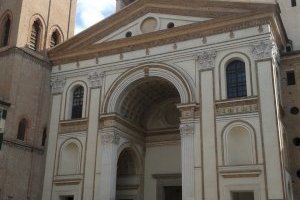
I visited Mantua two times already, first, as a stop during the trip from the Garda Lake in direction to Tuscany and Umbria. My first impression from historical town located between lakes of river Mincio was quite good but not exceptional. I returned to Mantua this year, and the reason was to visit S Andrea church and Palazzo Te. I skipped Palazzo Ducale even this time because it looked too vast and expansive to me…
S Andrea is really a masterpiece, quality of which can be recognized mostly in the interior. The entire building documents how architects tried to find a way from Middle Ages towards modern times… The main façade (PHOTO) looks a bit odd demonstrating that it is a experiment of the architect to find a balance between exterior and interior. It proves that doing a progress from dark ages towards bright future was a difficult task... The interior is really stunning with colorful paintings and decorations, which are integrated into a consistent structure of highest qualities.
My next stop was Palazzo Te that is quite distant from the main squares between Palazzo Ducale and S Andrea, but it is definitely worth a detour. From outside it looks quite strict and clean, but the interiors are incredibly decorated in a style of mannerism. I knew only imitations built by Italian architects in Czechia and central Europe, but I must say that Palazzao Te is a masterpiece.
I also did an attempt to visit Sabbioneta: I …
Keep reading 0 comments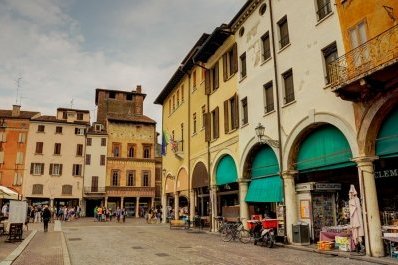
The towns of Mantua (Mantova in Italian) and Sabbioneta are paired into a single World Heritage site on the basis of representing two different facets of Renaissance city planning: the former an example of an existing city rebuilt and renewed, the latter a completely new town built according to the prevailing concepts of the ideal town of the time.
You can certainly see Renaissance influence in the architecture and un-medieval wideness of some of the streets around Mantua’s center. The most interesting architecture in town is concentrated around its historic core, focused on Piazza delle Erbe and Piazza Sordello. The latter, wide and spacious, is home to the Mantua Cathedral, the Ducal Palace, and a host of other impressive buildings. The time I allocated for seeing the town allowed me to visit the cathedral (ok, but not surpassingly remarkable) and the palace, which offers a couple of dozen of increasingly impressive spaces, sparsely furnished but boasting magnificent ceilings and wall frescoes and decorations. There is a number of visually arresting mansions and churches on nearby streets and squares.
Sabbioneta has a small grid-like core of streets that forms the basis for its inclusion on the UNESCO list. I did not find anything exceptional there and left underwhelmed and disappointed. On a Saturday afternoon, not helped at all by the intermittent rain, the town looked nearly deserted and far from festive or even remarkable. I probably should have spent more time in Mantua instead. The key features of …
Keep reading 0 comments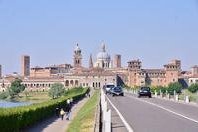
I visited this WHS several times. Mantua is a special place in the Po valley with a truly unique panoramic view of the whole city just before approaching the main street. Both cities were ruled by the Gonzaga family and they played an important role in the dissemination of Renaissance culture.
Keep reading 0 comments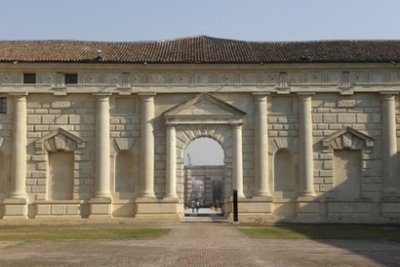
Mantua was added late to the WH list, only in 2008. At that time, reading the particularly weak AB evaluation, I was wondering if it was worthy enough. The combination with Sabbioneta seemed difficult to explain, and there was no clear reason given why it would distinguish itself from other Italian Renaissance cities. Only recently I started to become more interested in Art History, even just finished a course on it as part of my General Cultural Sciences studies. Mantua popped up there quite prominently. It even got 2 entries among the 101 masterworks of European art and architecture. So I became very interested in visiting.
The town is a bit far from everywhere, and it took me 2 hours to get there on a local train from Ferrara. From the train station, it is a walk of another 15 minutes or so to the heart of the city, through quite unimpressive streets. My first goal was the Sant’Andrea basilica, one of the 2 “masterpieces”. Its dome can be seen from afar, but finding the entrance is a lot more difficult. The façade of this 15th-century church is dwarfed by the neighbouring tower and shopping arcades. Leon Battista Alberti designed this church using the triumphal arch motif in both the interior and the façade. Inside I was surprised by how big it is. Unfortunately, the nave is currently totally hidden under scaffoldings. At the back though, restorations of the dome and transept have been finished, showing the same triumphal …
Keep reading 0 comments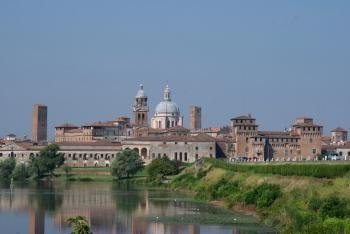
Those who travel to Mantua by car, should definitely take the SS10 from the east. The first view of the city “skyline” is overwhelming. From this perspective, the buildings are perfectly arranged: the Palazzo Ducale, the Castello San Giogio and the church towers. The city is surrounded on three sides by artificial lakes, which formerly served as a defence system and now contribute to the special flair of the city.
We enjoyed it a lot to stroll through the historic centre. The main sights are located on three contiguous squares. The main square, the Piazza Sordello, is dominated by the Palazzo Ducale, a huge complex, which consists of several buildings with courtyards, gardens and connecting corridors. It is virtually a small city in itself. Parts of the palace can be visited, the most impressive room is the Camera degli Sposi with frescoes by Andrea Mantegna. Another highlight was the Basilica Sant'Andrea. We were extremely impressed, although the interior was under renovation and the nave was partially hidden by scaffolding (our visit was in August 2011). In the transept and the apse the restoration was already completed, so we could see the effects of the restoration in comparison to the parts not yet renewed. It will look magnificient when everything is finished.
We spent two hot summer days and nights in Mantua. The restaurants and cafés were full with tourists and locals until late in the evening, it was very atmospheric. Exactly what you would expect from the summer in an …
Keep reading 0 comments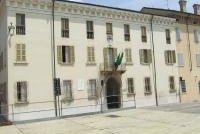
I do not understand why these two towns are linked in one site; there do not appear to have any physical connection. Mantova is reached by train from Verona and Padova (in the Veneto) while Sabbioneta is reached by bus from Parma or Casalmaggiore.
From Mantova station a bus CC circulates around the sites, first to Piazza Erbe for Piazzas Sordello and Broletto and the Ducal Palace, then to Porta Pusteria for Palazzo Te.
The pristine town of Sabbioneta is so small that it can easily be walked around.
Keep reading 0 comments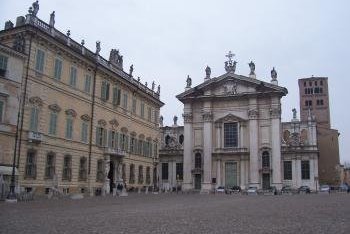
There is a real wow factor when approaching Mantua from road over ponte San Girgio, especially at night. The Castle and Palace were magnificently lit up as we crossed the lake that surrounds the city on 3 sides. We would have missed this entry had it not been for a strike on the Italian train system that led us to meet some very accommodating Mantovani's who offered to drive us from Verona, and take us on a special detour to see this great entrance to the city. So Grazie mille Mauro, Claudia and Daniel you made our introduction much more memorable.
The next morning we had a walk around the centre which is very pleasant. There are several cobbled squares and large churches to view. The Basilica of Sant'Andrea was an undoubted highlight and well worth some exploration, the interior is very impressive.
The main reason we decided to vist was to explore the sprawling Palazzo Ducale which takes up a whole quarter of the historic centre. It is mostly juts a standard rambling fortified palace with a few nice rooms, however it does contain a magnificent Bridal chapelpainted by Mantegna which was an undoubted highlight of this trip for me. It was in courts like this that the renaissance really started to grow and develop and this impressive room is a great testament to this period.
Mantua was a nice place to spend half a day in, and in many other countries would be an absolute highlight. It …
Keep reading 0 comments

